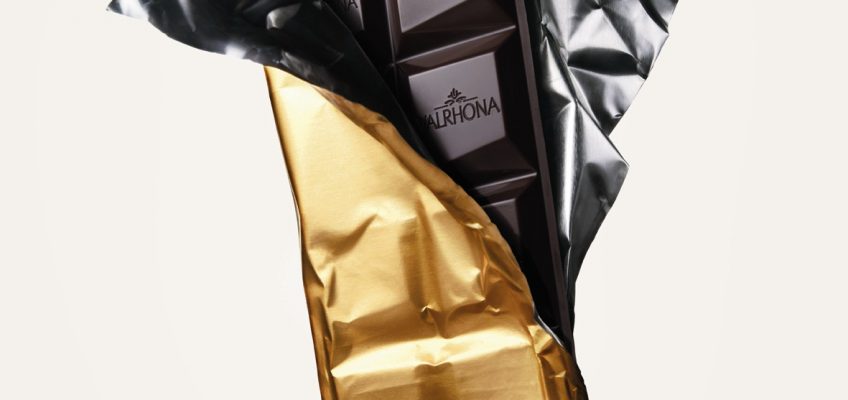Like carbon, the treat can take on many crystalline forms, so a master chocolatier must know how to temper it in just the right way
By Brian Handwerk
smithsonian.com
February 13, 2015
Working with chocolate is often called an art, and top chocolatiers can boast of many masterpieces. But the complex physics of chocolate—a substance that in some ways behaves more like steel than other foods—means that chocolatiers’ kitchens are also working science labs.
Chocolate is a six-phase polymorphic crystal, meaning that when it’s melted it can recrystallize six different ways. Joshua Erlich, a physicist at the College of William & Mary and an amateur chocolate maker, compares the crystal structure of chocolate with that of carbon. “Carbon can come in may different forms, like diamonds, graphite or pencil lead, which is actually the most stable, and even carbon nanotubes. There are lots of different phases of carbon, and similarly there are six different phases of chocolate,” he says.
Cocoa butter is a vegetable fat naturally found in cacao beans that largely determines the material’s physical properties. “Conveniently, the different crystal structures cocoa butter forms melt at different temperatures,” Erlich says. That allows chocolatiers to melt chocolate into a liquid to destroy the existing crystal structures and then manipulate the temperature to encourage only the correct form to be created. This is the process known as tempering, which is also used to improve the properties of carbon alloys such as steel.
Of the possible crystal structures, Form V is the chocolatier’s ultimate prize: “When a chocolatier tempers chocolate, what he’s doing is creating the right type of crystal structure, the type that melts in your mouth and not in your hand, the type that has that glassy appearance, the type that has that sharp snap when you break a piece,” says Erlich.
Chocolate properly tempered in this way features long, skinny molecules all stacked nicely in line—which produces the clean, reflective surface connoisseurs love. It also delivers the taste, texture, durability and other properties most desired in chocolate.
Any mistakes in this heating and cooling process can produce crumbly, cloudy chocolate with a poor taste. There are other potential pitfalls, like the danger of accidentally introducing a drop or two of water in the process. “Just a tiny bit of water will cause the chocolate to seize up and become very sticky,” Erlich says. “Essentially the viscosity shoots way up and the chocolate is ruined. That’s a physical property due to the interaction between water and melted cacao butter, so you have to be very careful.”
But even when tempering is complete, it doesn’t always mean the end of chocolate’s phase changing. Form VI chocolate, while dull, waxy and slow to melt in the mouth, is actually more stable than Form V. Over a period of months, a beautiful piece of chocolate can undergo a slow physical transition to the more stable but inferior crystals. It then displays a greyish coating dubbed “chocolate bloom” because fats have been brought to the surface.
Proper tempering and storage can avoid many such ills, and a solid understanding of the physics means that even someone using a tempering machine can get excellent results.
When crafting gourmet bonbons and other delights, chocolatiers can also manipulate the crystal structure to regulate how quickly the flavor spreads. A taster must use the same amount of energy to break down crystals that chocolatiers used to create them. A chocolate with lots of Form V crystals takes more energy to break down and delivers a mixed flavor profile that may take 5 to 10 minutes to unwind. A version with fewer crystals, on the other hand, produces an explosive release of flavor. Adding complementary ingredients to the chocolate can enhance these experiences.
Brian Handwerk is a freelance writer based in Amherst, New Hampshire.
Read more: http://www.smithsonianmag.com/science-nature/what-physics-tells-us-about-making-perfect-chocolate-180954252/#TIS4VGLX5fqIdiXj.99



